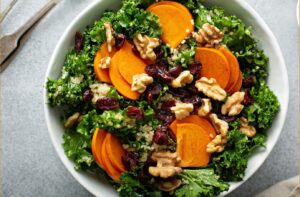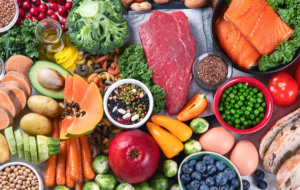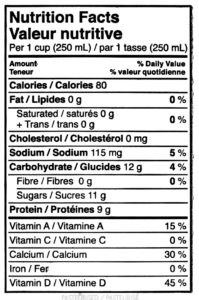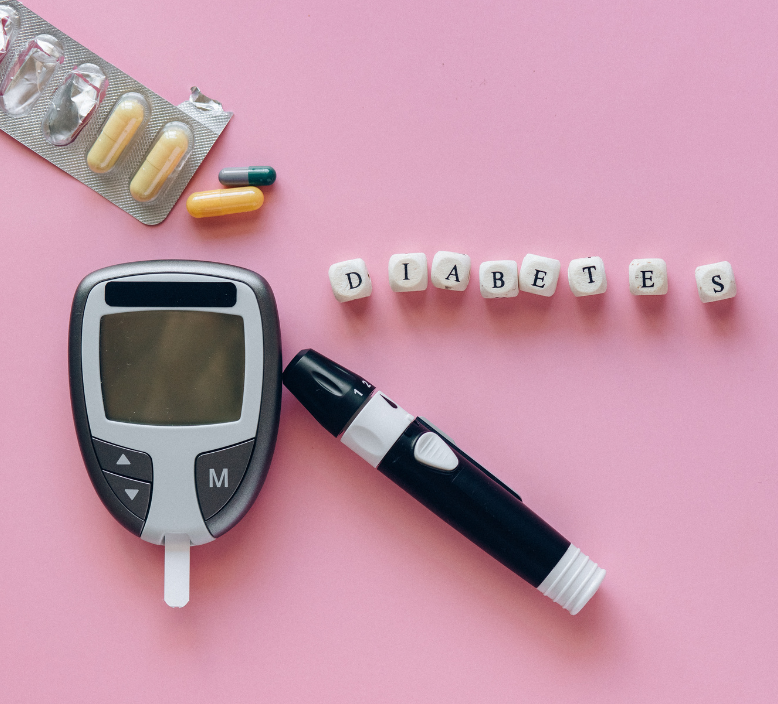Three Tips for Healthy Eating on a Budget

Healthy eating on a budget can seem complicated, but it is possible. That is often the excuse we give – healthy eating is so expensive! And it sometimes can be. The cost of healthy eating can be astronomical unless you know where to look, what to cook, and how to make it work for you. These three tips will help you make healthy eating on a budget a reality- in any situation.
Healthy Eating on a Budget Tip #1: Focus on The Three Macronutrients.
Scouring Pinterest for healthy recipes can be fun, but more often than not, those recipes have a large list of ingredients. If you don’t already have a well stocked kitchen, you’re going to spend a fortune buying 10 ingredients all for one recipe. Healthy eating doesn’t have to be complicated or include tons of ingredients. If you plan your meals around the three macronutrients – protein, carbs, and fat – you’re going to save time and money.
 So, make a list of a few protein sources you like, a few carb sources, and a few fat sources. Use these to piece meals together. You can even bulk prep, and save time as well. For example, prepare a large batch of shredded chicken and ground turkey. Don’t season it until you’re ready to eat – that way, you can change the seasonings or sauce for each meal and not have to eat the exact same thing every day. Next, prep a large batch of rice or sweet potatoes, and have some tortillas on hand. For your fat sources, you could use olive oil and avocados. Now that all of these macronutrients are prepped, you can throw dinner or lunch together in a matter of minutes. And you can mix and match so that you’re not getting bored with what you’re eating. One day can be ground turkey tacos with avocado, one day can be shredded chicken tacos, and one day can be ground turkey rice bowls with any veggies that you like. If you stick to bulk prepping the three main macronutrients, you can eat very healthily on a budget.
So, make a list of a few protein sources you like, a few carb sources, and a few fat sources. Use these to piece meals together. You can even bulk prep, and save time as well. For example, prepare a large batch of shredded chicken and ground turkey. Don’t season it until you’re ready to eat – that way, you can change the seasonings or sauce for each meal and not have to eat the exact same thing every day. Next, prep a large batch of rice or sweet potatoes, and have some tortillas on hand. For your fat sources, you could use olive oil and avocados. Now that all of these macronutrients are prepped, you can throw dinner or lunch together in a matter of minutes. And you can mix and match so that you’re not getting bored with what you’re eating. One day can be ground turkey tacos with avocado, one day can be shredded chicken tacos, and one day can be ground turkey rice bowls with any veggies that you like. If you stick to bulk prepping the three main macronutrients, you can eat very healthily on a budget.
Healthy Eating on a Budget Tip #2: Cook at Home More Often
As you know, eating out and trying to eat healthy can be very expensive. Salads or food that isn’t fried can be some of the most expensive items on the menu. It can be very frustrating when a salad is $20, but a burger and fries is $7. That’s a hard choice to make! Cooking at home not only saves you money, but it saves you calories as well. With how food is made in restaurants, it’s often very high in fat and very low in nutrients. You’ll end up with a small amount of food that costs you quite a bit of your calories for the day.
 By buying food in bulk, and cooking it at home, you’ll be able to stick to your budget but still enjoy healthy food. With the plan listed out in tip #1, cooking at home doesn’t have to be time consuming or even hard. You don’t need master cooking skills to bulk prep rice and meat. The key is making food you like, and making it taste good. Keep the base ingredients simple – protein, carbs, and veggies – and then spice up each meal with different low calorie sauces or spices. Making it flavorful will keep you from getting bored with eating at home, which in turn, keeps your budget in check.
By buying food in bulk, and cooking it at home, you’ll be able to stick to your budget but still enjoy healthy food. With the plan listed out in tip #1, cooking at home doesn’t have to be time consuming or even hard. You don’t need master cooking skills to bulk prep rice and meat. The key is making food you like, and making it taste good. Keep the base ingredients simple – protein, carbs, and veggies – and then spice up each meal with different low calorie sauces or spices. Making it flavorful will keep you from getting bored with eating at home, which in turn, keeps your budget in check.
Healthy Eating on a Budget Tip #3: Eat Less Processed Foods
Unhealthy processed foods can be very tempting and can look like they are less expensive than healthy foods. However, you need to take a closer look at the price per serving. Let’s pick on a box of Cheez-Its. A box of Cheeze-Its at Walmart will cost you around $4, and a regular box has 12 servings. That’s about 0.33 cents per serving. Now, let’s look at bananas. Bananas are typically .19 cents each. Not only is a banana cheaper per serving, but it will also keep you fuller for longer. Cheeze-Its and other highly processed snack food is designed to make you want more and more. When is the last time you had just one serving of chips or crackers? It’s not likely, because it’s made to be addictive. So you end up eating more, which in turn will cost you more money. But no one over eats on bananas.
 To get the best bang for your buck, you need to watch out for buzz words when it comes to processed foods. Snack items that are advertised as healthy because they are gluten-free or organic can definitely be more expensive than their regular counterparts. That is why it is important to just stick with less processed foods overall. All fruit and vegetables are naturally gluten-free so you don’t need a fancy, highly processed snack if you are working towards a gluten-free diet. A good rule of thumb when grocery shopping is to keep to the perimeter of the store. Look for fresh fruits, vegetables, grains, meats, and dairy to make balanced meals and snacks. You won’t be buying based on cravings, which keeps you on a tight budget.
To get the best bang for your buck, you need to watch out for buzz words when it comes to processed foods. Snack items that are advertised as healthy because they are gluten-free or organic can definitely be more expensive than their regular counterparts. That is why it is important to just stick with less processed foods overall. All fruit and vegetables are naturally gluten-free so you don’t need a fancy, highly processed snack if you are working towards a gluten-free diet. A good rule of thumb when grocery shopping is to keep to the perimeter of the store. Look for fresh fruits, vegetables, grains, meats, and dairy to make balanced meals and snacks. You won’t be buying based on cravings, which keeps you on a tight budget.
Healthy eating on a budget can be accomplished by sticking to these tips. Make a plan, stick to it, and you’ll save money and feel good about your eating. For more guidance on how to eat healthy on a budget, email Jalpa for personal coaching.
Jalpa is a registered dietitian and nutritionist with a Master’s degree in Health & Nutrition from Brooklyn College, CUNY in New York. She also holds a Certificate of Training in Adult Weight Management through the Academy of Nutrition & Dietetics, CDR.
Related Articles:
















 er hand, lack one or more amino acids. Essential amino acids are ones that the body cannot create on its own and must obtain from food sources. Amino acids aid in muscle growth and repair, enzyme and hormone production, and immune and cell function and it’s important that we obtain all of them from our diet.
er hand, lack one or more amino acids. Essential amino acids are ones that the body cannot create on its own and must obtain from food sources. Amino acids aid in muscle growth and repair, enzyme and hormone production, and immune and cell function and it’s important that we obtain all of them from our diet. ds, it just means finding a way to enjoy them in moderation. For example, if you love pasta, try having a smaller serving of
ds, it just means finding a way to enjoy them in moderation. For example, if you love pasta, try having a smaller serving of 





 Enjoy the Holidays
Enjoy the Holidays
 Macronutrients
Macronutrients Special Claims and Food Label Terms
Special Claims and Food Label Terms


 Find What Works for You
Find What Works for You

